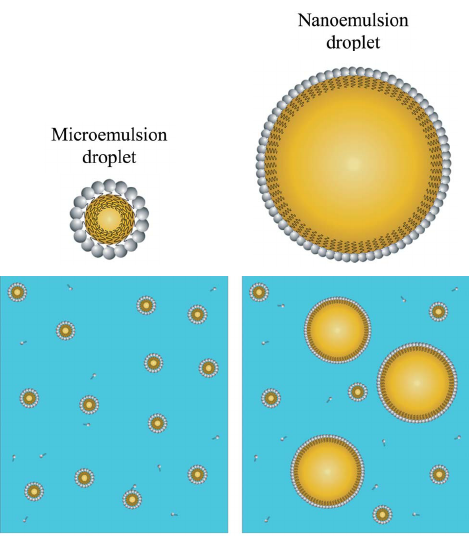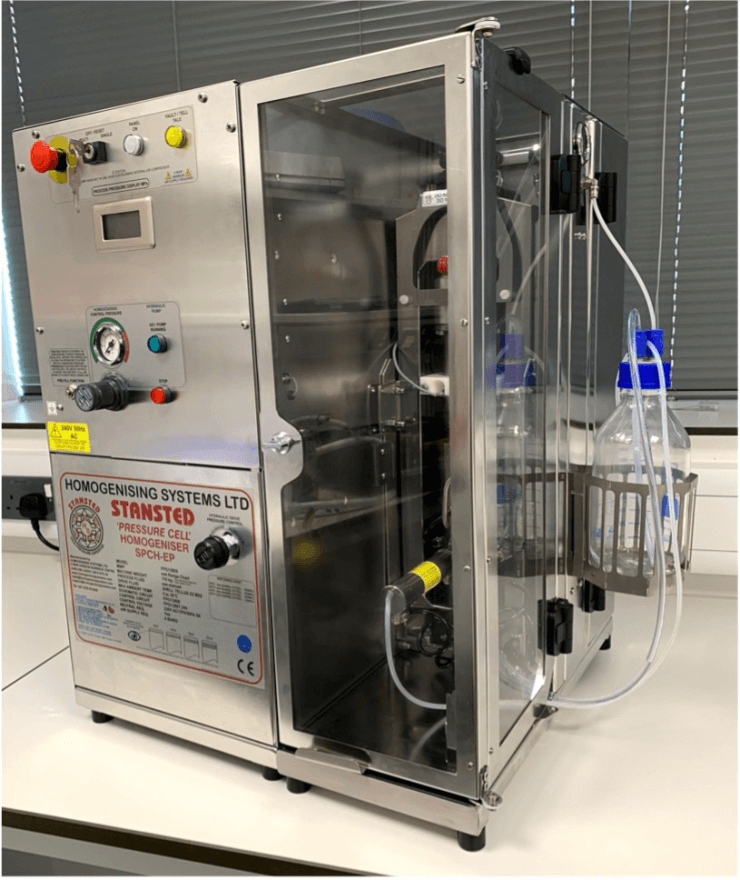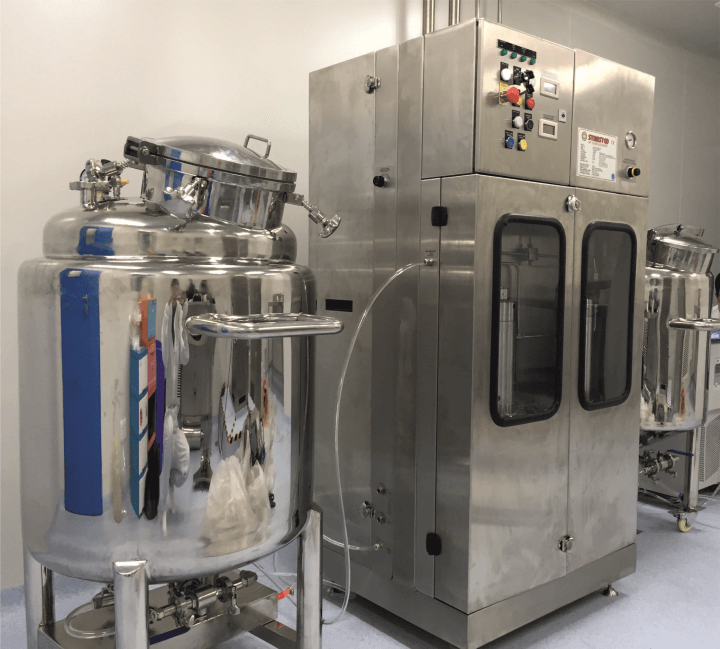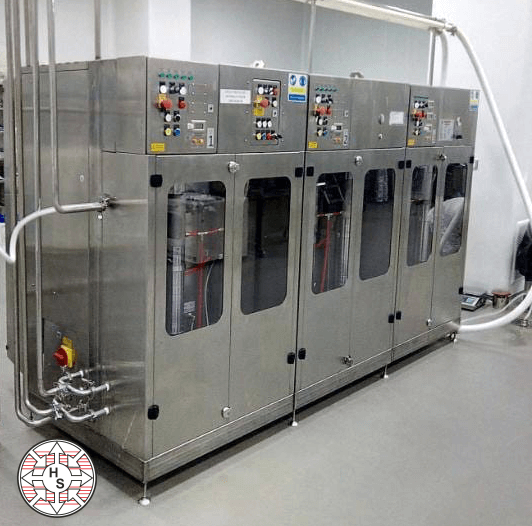1. Ultra High Pressure Homogenization (UHPH) - a mechanical technique that uses very high Pressure to force the liquid based cell suspension through a Homogenizing valve (narrow space) which generates high shear.
2. Sonication - a technique that uses ultrasonic sound waves delivered using a vibrating probe that is immersed in the liquid cell suspension to agitate and lyse cells.
Both technologies have their advantages and disadvantages and the product you select for your project will ultimately depend on your downstream applications, the cell types / substances you are processing and process volumes.
Scalability
Mechanical High Pressure Homogenization is very scalable. Our versatile systems can scale-up from Lab R&D, processing small samples, up to full production volumes with full global support.
Sonication is not really intended for larger volumes as it is difficult to scale and manage. Generally it is a lower cost technology used for small processing volumes.
Particle size reduction
For example creating Nanoemulsions, Dispersions and as part of the process of Liposome production / extrusion.
Our UHPH technology is the best technique for creating very small particle sizes - well below 100nm - with consistent, uniform particle sizes with very narrow particle size distributions / good PDI.
Sonication, whilst able to produce small particle sizes, is not suitable for larger volumes (typically more than 20L) or higher viscosity solutions.
Cell Disruption / Cell Lysis
Sonication is fine for lysing individual cells, but often it does not do so equally. Also, Sonication is not usually powerful enough to disrupt tough cell membranes.
Advantages of our HPH technology for cell lysis:
- better and more complete cell disruption, results in higher output (~90%) - so much better yields of cell contents.
- more gentle cell disruption, and usually less heat is produced, so better for when working with sensitive proteins especially and ensuring that intracellular contents are not damaged.
- better at lysing 'tough' cells - the powerful, and controllable, mechanical pressure, our HPH technology is well-matched with organisms such as Bacteria, Yeast, and Fungus, whose tough cell walls need to be broken open.
Repeatable results
HPH is usually better at producing consistent, repeatable results than Sonication. Obvious advantages of this include better improved product consistency and easier scalability and reliability of production.
Even small changes in sonication volume, vessel, or transducer can generate different results.
Versatility
Our HPH technology is more versatile than sonication. Features including easily interchangeable processing cells, processing option / valves, controllable flow rates and temperature to name but a few.
Heat
As you know, both technologies generate heat. Typically ultrasonics generate more heat than HPH and so are less suitable for temperature-sensitive substances/cells including some Proteins.
Our HPH technology has advanced heat exchanging options for cooling developed over many years.
Viscosity
Both technologies efficiency can be affected by highly viscous samples. Sonication is generally unsuitable for high-viscosity liquids above 4,000 cP.
High pressure homogenizers can generally process any liquid that can be pumped, within limitation.
Noise
Sonicators often produce a very loud noise, often requiring personal protective equipment to be worn by operators.
Our HPH technology is not as noisy by quite a margin.
As you can see above, our method of mechanical High Pressure Homogenization has quite a few advantages over sonication.
Our versatile Homogenizers - features
![]() Ultra high pressures to 60,000 psi (4200 bar) and processing from 1 ml, e.g. for Lab R&D, up to flow rates in excess of 1000 l/hour (264 USG) for full production systems.
Ultra high pressures to 60,000 psi (4200 bar) and processing from 1 ml, e.g. for Lab R&D, up to flow rates in excess of 1000 l/hour (264 USG) for full production systems.
![]() Scalable and repeatable results to improve further your product consistency. Easy to use with low maintenance costs.
Scalable and repeatable results to improve further your product consistency. Easy to use with low maintenance costs.
![]() Versatile and robust controllable systems with both piston gap and micro-channel processing options.
Versatile and robust controllable systems with both piston gap and micro-channel processing options.
Please contact us now to discuss your requirements.



Small scale, high versatility, fully featured systems with pressures to 60,000 psi (410 MPa, 4200 bar).

Robust systems up to 125 l/hr. Options of both piston gap and micro-channel processing technology.

Fully featured Production systems, for the most demanding requirements, with flow rates up to 1000 l/hr.
